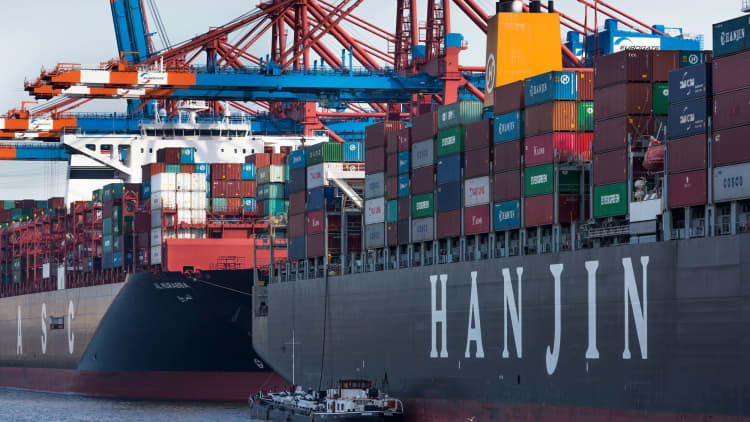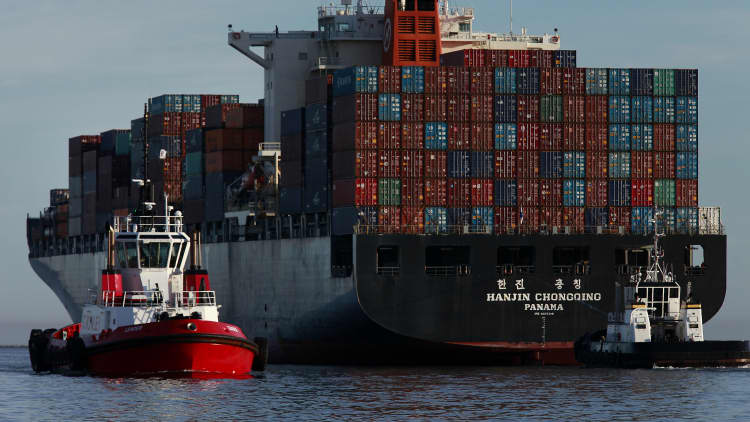
Hanjin Shipping vessels have been seized at Chinese ports in the wake of the South Korean firm's collapse, further roiling the industry as freight rates jump and manufacturers scramble for alternatives.
Seeking to contain the fallout, a South Korean court said it would soon begin proceedings to rehabilitate the carrier - which would allow Hanjin to take legal action in other countries to keep its ships and other assets from being seized.
Rival Hyundai Merchant Marine will also deploy at least 13 of its ships to two routes exclusively serviced by Hanjin, while the South Korean government also plans to reach out to overseas carriers for help.
The court's move to rehabilitate the world's seventh-largest container shipper is seen as mainly procedural, and an eventual liquidation of assets is likely, analysts and industry officials said.

"Unlike dry cargo, liner shipping is all about marketing and service reliability — we haven't seen any large carriers come back from collapse," said Rahul Kapoor, a director at maritime consultancy Drewry Financial Research Services.
"There is a loss of faith among customers. It's very unlikely Hanjin can come back from the ashes."
Hanjin's banks decided to end financial support for the shipper this week and since then, many of its vessels have either been denied entry to ports or unable to dock as container lashing providers fret that they will not be paid. This includes the port of Busan, South Korea's largest.
The Korea International Trade Association said on Thursday that about 10 Hanjin vessels in China have been either seized or were expected to seized by charterers, port authorities or other parties. That adds to one other ship seized in Singapore by a creditor earlier this week.
The collapse comes at a time of high seasonal demand for the shipping industry ahead of the year-end holidays.
Freight rates on some routes where Hanjin operates many ships have surged.
The cost of shipping a 40-foot container on the Busan-Los Angeles route has jumped about 55 percent, from $1,100 to around $1,700, according to South Korea-based freight forwarder Pantos Logistics. Rates between South Korea and the U.S. east coast via Panama have risen about 50 percent to $2,400, it added.
Stranded televisions
LG Electronics, the world's No.2 maker of TVs, told Reuters it was canceling orders with Hanjin and was seeking alternatives to ship its freight. It is also making contingency plans for cargo already on board Hanjin ships in the event the vessels are seized.
The Korea International Freight Forwarders Association said it has been inundated with calls from cargo owners worried about the fate of their shipments in transit to the United States and Europe.
While mobile phones and semiconductors are carried by air, other electronics like home appliances are shipped by sea.
"This will have an impact on the entire industry," said Cho Kyung-kyu, a director at the association.
South Korea's maritime ministry said on Wednesday that Hanjin's woes would affect cargo exports for two or three months, with about 540,000 TEU of cargo already loaded on Hanjin vessels and facing delays.
A Hanjin bankruptcy would be the industry's largest ever in terms of capacity, according to consultancy Alphaliner, exceeding the 1986 collapse of United States Lines. The shipper accounts for 7 percent of Far East-North America container trade.
South Korea's ailing shipbuilders and shipping firms, which for decades were engines of its export-driven economy, are in the midst of a wrenching restructuring.
State-run think tank Korea Maritime Institute estimated that shipping rates on Busan to U.S. routes would rise 27 percent and Busan to Europe routes would rise 47 percent in the near term, causing Korean exporters additional shipping costs of about 440.7 billion won per year.

